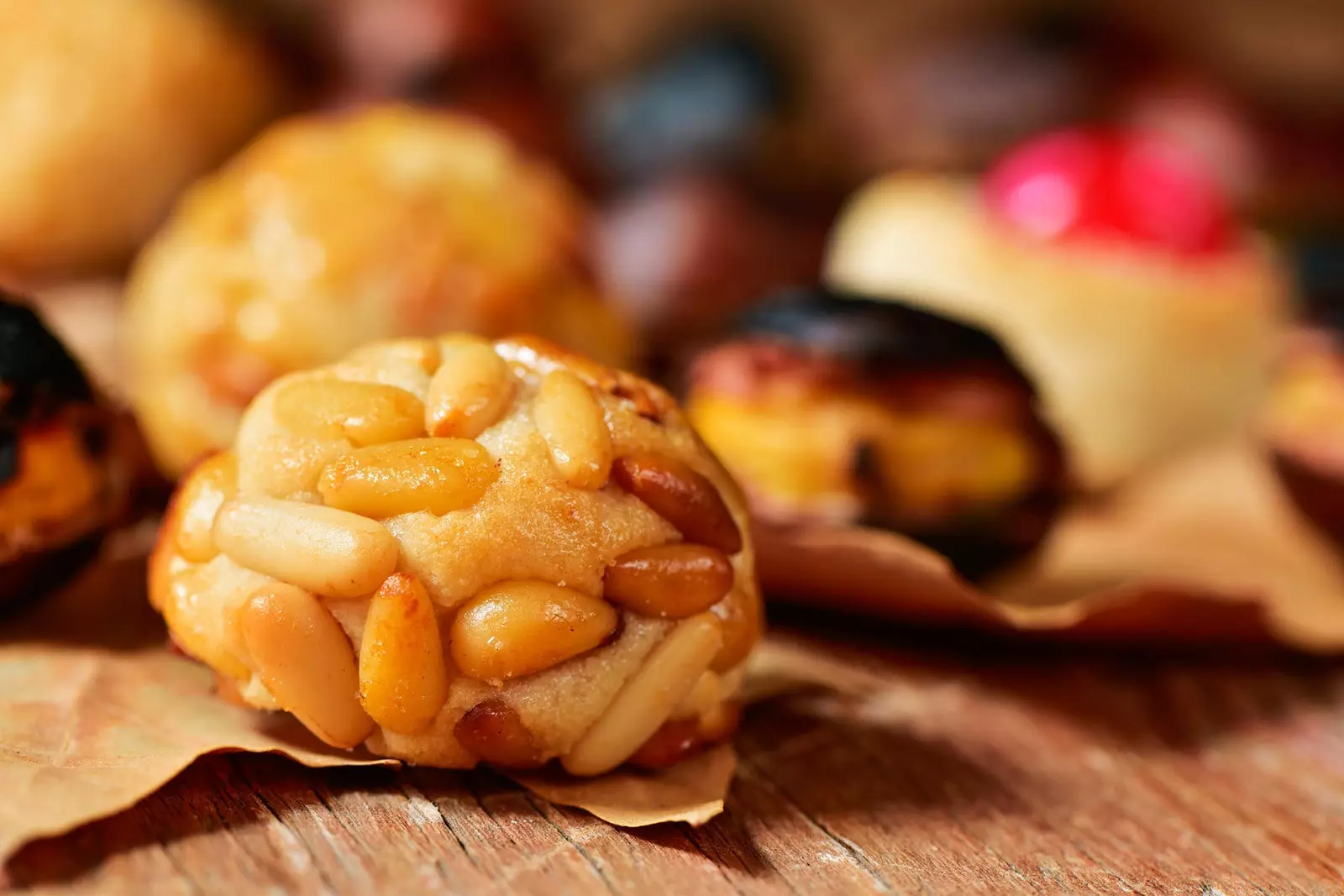
panellets
The feast of All Saints is a time to remember those who are no longer , fill the cemeteries with flowers and feel closer than ever to all our deceased. But above all it is a day to celebrate with the family, eat saint bones, wind fritters or panellets and roast chestnuts. Yes, CHESTNUTS (and not so many pumpkins) . Let the traditions begin.
GALICIA: SAMAIN
Galicians don't celebrate Halloween, they celebrate Samain (Samhain), an ancient tradition commemorated by the Celts long before the Anglo-Saxon Halloween took over the world. The Celts celebrated it on the night of October 31, when the harvest season came to an end and the "Celtic New Year" began, which marked the entrance to a darker season. During the night of Samain disappears the boundary between the world of the living and the world of the dead.
Tradition calls for decorating houses with grotesque ornaments and emptying pumpkins to put candles (before it was done with skulls and later with turnips) to scare away evil spirits; or dress up as one of them with skins and animal heads so that they pass by.
Nowadays, in many Galician villages, families go out at night to cemeteries to pray to the souls of the dead by candlelight . The women spend that day cleaning the stones of the holy field and putting flowers to have everything ready for the night. In Samaín it is also very typical to celebrate the wizard , a meeting between friends and family where chestnuts are roasted and stories are told by the fire.
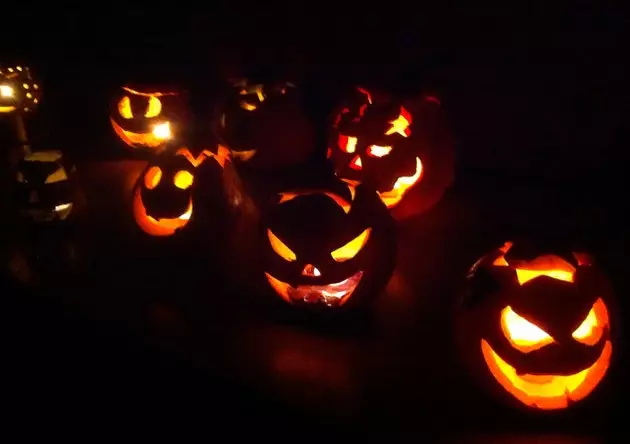
In Galicia they live the night of Samaín
CANARY ISLANDS: THE NIGHT OF THE FINAOS
According to tradition, the Canarians celebrate the night of the Finaos, a tradition that makes all the members of the family gather at home to remember their finans, that is, their dead. Usually the mother or the grandmother tells stories, anecdotes and jokes about all the deceased in the family . In that family reunion there is no lack a good snack with the fruits of this season: pine nuts, walnuts, apples, roasted chestnuts and almonds that accompany with sweet wine , anise and honey rum (to warm up) .
Over time, this tradition has taken to the streets and the towns celebrate the night of the financiers with music, dances and a huge bonfire. For example, this year Las Palmas de Gran Canaria has prepared a night of the Finaos full of classical music, dance and theater shows that are described as a "song to life after death".
In some towns of Gran Canaria , such as San Mateo, San Nicolás, Ingenio, Valsequillo or Teror, it is still possible to see the ranches of souls passing by the houses playing with guitars, drums and tambourines and collecting money that they later give to the church to celebrate masses for the dead.
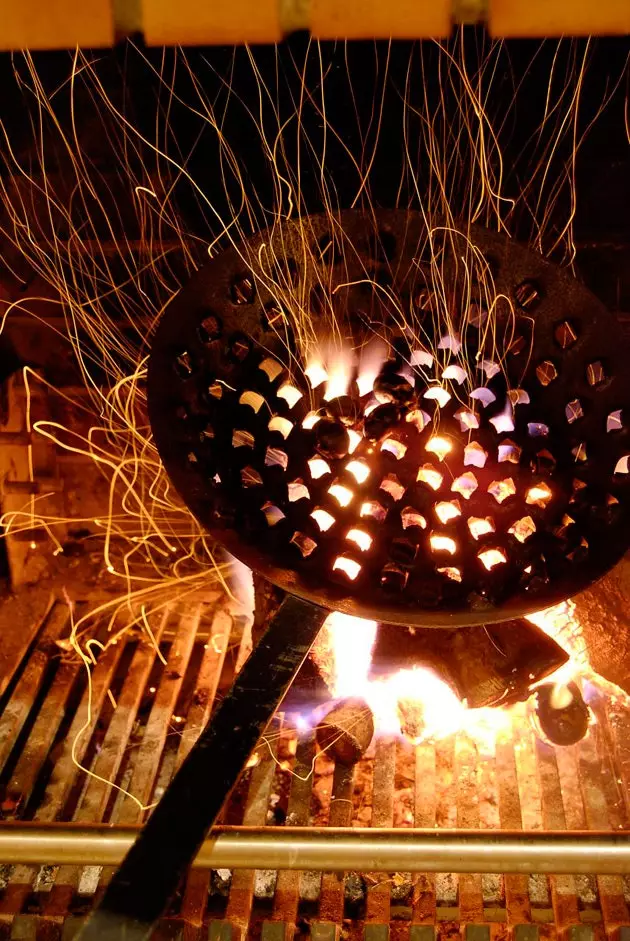
Better chestnuts than pumpkins
CATALONIA: THE CASTANYADA
The Night of the Saints in Catalonia is synonymous with Castanyada. This festival that dates back to the 18th century has a great protagonist: the roasted chestnut. In addition to honoring the dead, Catalans celebrate the autumn season in this way. Its origin is related to an ancient funeral ritual in which families gathered around the table to remember their deceased while eating typical autumn fruits such as chestnuts and grilled sweet potatoes, along with sweets such as candied fruit and panellets .
These delicious sweets made from marzipan and covered in pinions (there are also coconut, coffee and chocolate) flood the windows of Catalan patisseries during these days. The typical drink to accompany them: a sweet muscatel wine
This festival is related to characters such as the campaners, who after stuffing themselves with chestnuts and sweets to charge themselves with energy, rang the church bells throughout the night in memory of the deceased. Another key protagonist of these festivities is the figure of the castanyera , an older woman with a headscarf selling warm roasted chestnuts wrapped in newspaper. This festival is also celebrated in other areas of Spain such as Valencia, the Balearic Islands and Aragon.
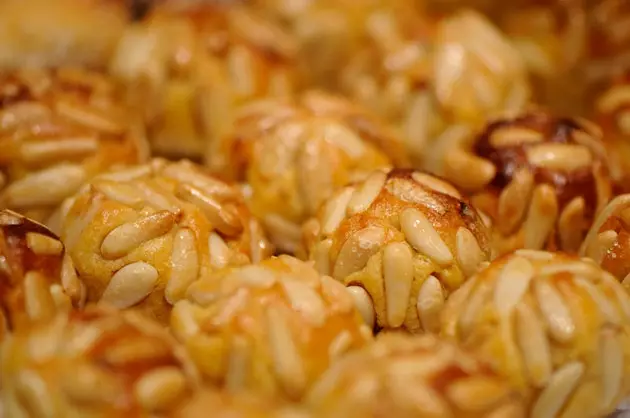
The delicious Panellets
BASQUE COUNTRY: GAZTAÑARRE EGUNA
To speak of the All Saints' festival in the Basque Country is to do it Gaztañerre Eguna , that is, the feast of the roasted chestnut. It is a gastronomic tradition in which family and friends gather to celebrate a snack dinner where they cannot miss snails in sauce, motokil (a dough made with corn flour), and roasted chestnuts for dessert , and deeply rooted in the lower area of the River Deba, in municipalities such as Eibar, Ermua or Soraluze (in Guipúzcoa) .
Formerly only men could celebrate this festival, although today (fortunately) there is no distinction between the sexes. Of course, now dinner is not taken at home, but people go out to the restaurants of the town to pay this tribute in memory of their deceased.
CADIZ: THE FESTIVAL OF TOSANTOS
The people of Cadiz bring their particular carnival to the market in their Tosantos festival. The curious thing is that here it is not only the people who dress up, but also the animals and vegetables from the market. Do not be surprised to see a piglet dressed in a wig and necklaces or the head of a smiling fish with a hat.
On these dates, more than 80 stalls from the Central and Virgen del Rosario markets participate in the Municipal Market Stall Exornos Contest, recreating comic scenes with dolls made of fruits, vegetables, meat, fish and nuts that represent (and criticize) politicians and figures of Spanish society. The festival is completed with musical performances, shows, conferences and tastings. Autumn fruits such as chestnuts or walnuts, or sweets such as santo bones and cider-filled fritters.
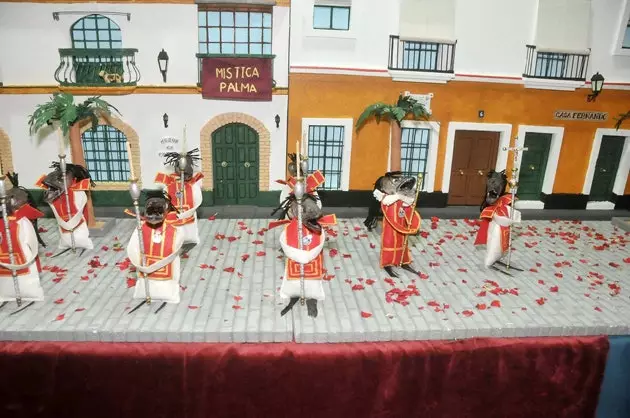
A carnival in the market
BEGÍGAR (JAÉN) : PORRIDGE TO CLOSE LOCKS
On All Saints' Night, the residents of Begígar do something very curious: They go out into the street with pots full of porridge to cover the locks on the houses. Tradition says that in this way the evil spirits of the houses are scared away. It is also customary to eat tortillas with chocolate, put oil lamps in houses to guide the path of the dead and honor the deceased in the cemetery.
EXTREMADURA: DAY OF THE JACKET
Halloween arrives and Extremadurans do not miss an opportunity to go out to the countryside to have fun on their well-known Chaquetía day. Young people and children are the protagonists. Loaded with chestnuts, walnuts, almonds, figs, pomegranates, quinces, apples and some homemade sweets such as quince jam, cakes or balls, the kids meet up with friends in the mountains to have a good time.
According to tradition, while the elders gathered around some good migas or porridge, the children went out the day before through the streets of the town to ask the neighbors for the autumn fruits that will form this popular snack. The little ones sing things like "Aunt, aunt, give me the chiquitía, otherwise you're not my aunt" or "Aunt la chaquetía, my aunt's chickens, some sing and others chirp, and others ask for cooked chestnuts!". This tradition is still maintained in towns like Zafra, Torreorgaz, Mérida or Puebla de Alcocer among many others. Currently, the work of the schools is essential so that this ancestral custom is not lost.
MARO, NERJA (MÁLAGA) : MAROWEEN
In the small district of Maro they celebrate the same Halloween weekend as their Chestnut and Roasted Sweet Potato Festival -no pumpkins at all. One thing led to another and the two parties were mixed, giving rise to the unique Maroween in 2009. A gastronomic and traditional event that mixes with witches and monsters terrorizing everyone who crosses paths. For these dates they also celebrate a traditional craft and gastronomy market and this year as a novelty, they present a horrifying Passage of Terror. Everyone tremble!
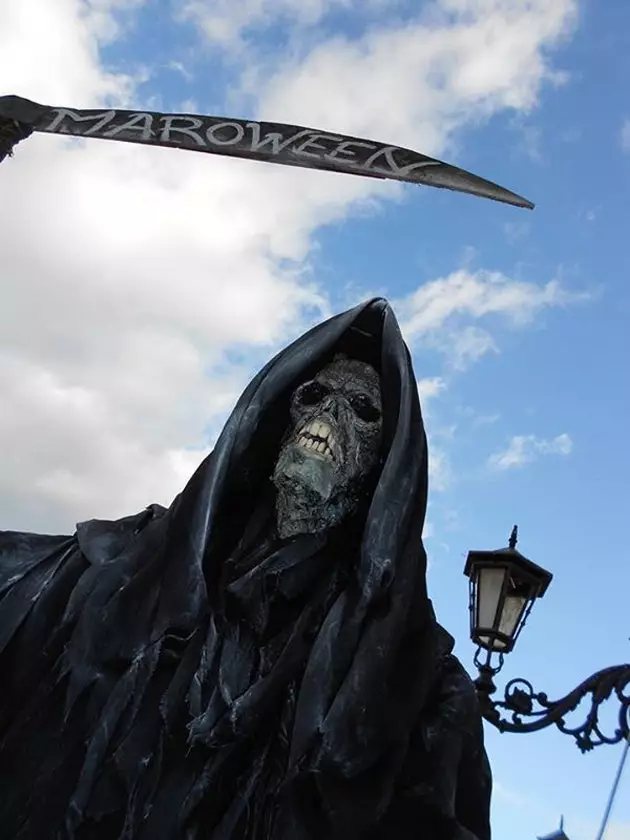
That's right Maroween
SORIA: BÉCQUER AND ITS MOUNT OF LAS ANIMAS
On the night of the dead, Sorianos pay homage to Gustavo Adolfo Bécquer and one of his well-known horror legends, the Monte de las Ánimas, whose stage is a mountain that exists in Soria. Every night of October 31, giant puppets, skeletons, medieval banners, Templar monks and other ghosts gather in the streets of the city with the only light of torches and oil lamps.
The stone bridge is your destination, where the Monte de las Ánimas is born and where The reading of this terrifying legend takes place in the heat of a bonfire. Later, with the embers of the bonfire, a blanket of embers is created through which the bravest will pass barefoot. As a final touch, a performance of paper lanterns with words from the legend are launched into the sky.
For those who want more, seven kilometers from Soria, in garray , carry out a Samaín Rite, a Celtiberian ceremony in memory of the deceased and ancestors. And in Tajueco , every morning of November 1 they celebrate the ritual of the Ánimas, which dates back to the Middle Ages. It is a gloomy procession led by a priest and two groups, one married and the other single, who sing the song of the souls. The end of the procession is marked by some bells, at which time the residents of the town put on their boots with cakes and wine.
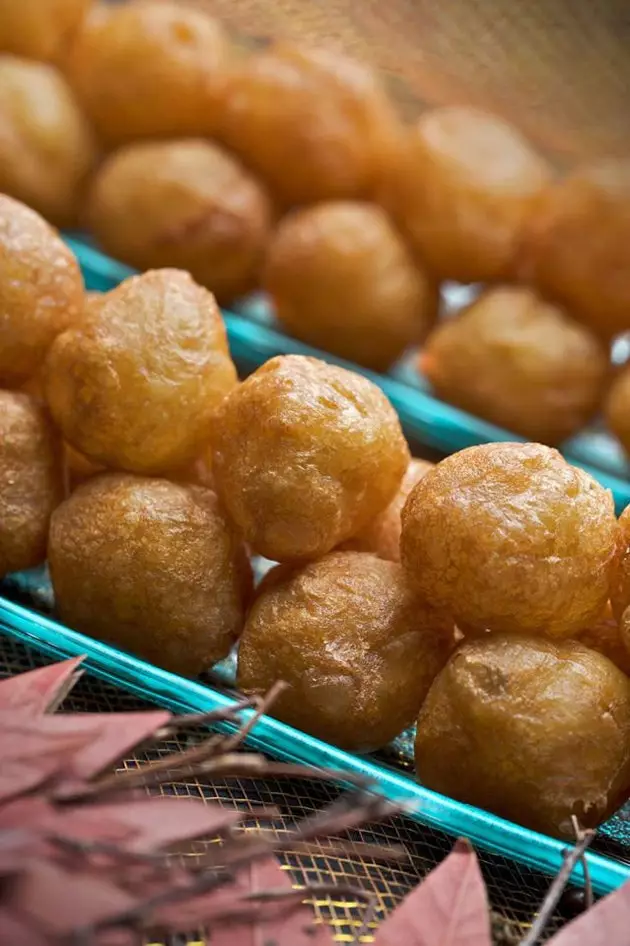
Fritters
ALCALÁ DE HENARES (MADRID) : DON JUAN TENOR
The Madrid town of Alcalá de Henares brings together thousands of people every night on October 31. The reason: the representation of José Zorrilla's work "Don Juan Tenorio" in the Orchard of the Archbishop's Palace. Since 2002 it has been declared a Festival of Regional Tourist Interest and is performed outdoors in five different spaces that run through the interior of the hotel, the square, the convent, Don Juan's house and the cemetery (we already know this year's distribution, you can check it here).
Zorrilla's work can also be seen in other Madrid theaters during these festivities, a perfect plan to accompany with the typical wind fritters and saint's bones (at the Nunos Pastry Shop, they are masters at experimenting with these gastronomic delights).
CANTABRIA: NOCHI THE SAID
As in Galicia, the Night of the Dead in Cantabria is closely linked to the Celtic tradition of samuin . If you want to enjoy your festivities to the fullest, you should know what the spells (big bonfires), the parade of the Gueste (a procession of souls in pain), the Guajonas (a thin old woman with a single tooth that sucks the blood of children), the Sun of the Dead (when the dead are resurrected), the warts (the illuminated pumpkins) or the Magostas (tastings of roasted chestnuts and sweet cider) .
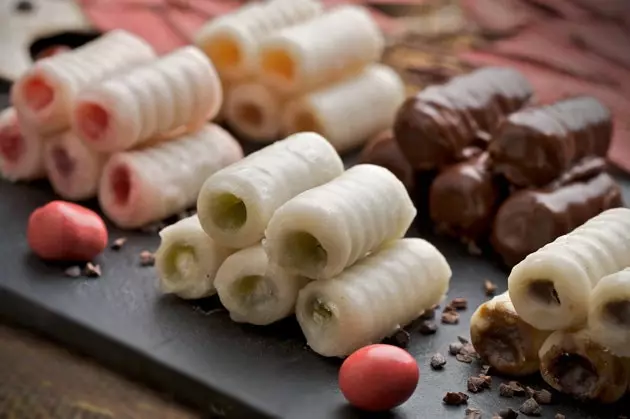
Bones of Santo, a temptation.
* Updated and published on 30.10.2015
